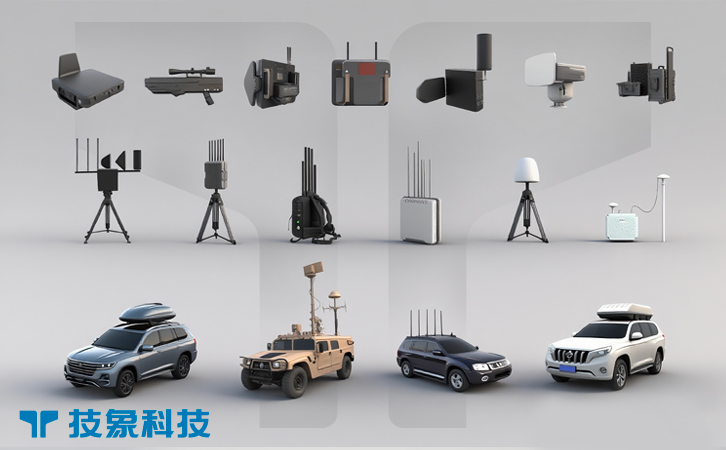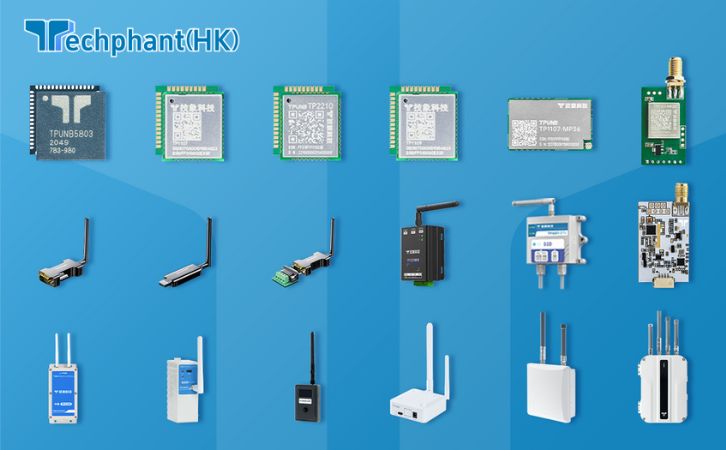The rapid proliferation of drones, or unmanned aerial systems (UAS), has transformed industries ranging from logistics to agriculture. However, their accessibility has also introduced significant security risks, including unauthorized surveillance, smuggling, and potential weaponization. As drones become more sophisticated, so too must the technologies designed to counter them. Counter-drone systems, often referred to as Counter-UAS (C-UAS), are evolving to address these threats, ensuring the safety of critical infrastructure, public events, and restricted airspace. This article explores recent advancements in counter-drone technologies, focusing on detection, neutralization, integration, and regulatory considerations.
I. Detection Systems: The First Line of Defense
Effective counter-drone operations begin with reliable detection. Modern detection systems leverage a combination of technologies to identify unauthorized drones with precision. Radar systems, tailored for low-altitude and small-target detection, have improved significantly. For instance, advanced Doppler radars can now distinguish drones from birds or other objects by analyzing micro-movement patterns, achieving detection ranges of up to 5 kilometers for small drones. Radio frequency (RF) analyzers complement radar by intercepting and decoding drone communication signals, pinpointing both the drone and its operator. These systems can detect unique RF signatures, enabling identification even in crowded urban environments.
Electro-optical and infrared (EO/IR) sensors are another critical component, particularly for visual confirmation. High-resolution cameras paired with machine learning algorithms can classify drone types based on shape, size, and flight behavior, even in low-light conditions. Acoustic sensors, though less common, are gaining traction for short-range detection, using sound signatures to identify drones in noisy environments. Recent advancements include multi-sensor fusion, where data from radar, RF, EO/IR, and acoustic systems are integrated to reduce false positives and improve detection accuracy. For example, systems like Dedrone’s DroneTracker combine these inputs to provide real-time situational awareness, achieving detection accuracies above 95% in controlled tests.
The challenge lies in scaling these systems for diverse environments. Urban areas with high RF interference or rural regions with limited infrastructure require adaptive detection algorithms. Emerging AI-driven solutions are addressing this by learning environmental patterns and dynamically adjusting detection thresholds, ensuring robust performance across scenarios.
II. Neutralization Techniques: Disabling the Threat
Once a drone is detected, neutralization becomes the priority. Counter-drone technologies employ both kinetic and non-kinetic methods to disable or redirect unauthorized UAS. Non-kinetic approaches, such as RF jamming, are widely used due to their effectiveness and minimal collateral impact. Advanced jammers can disrupt drone control signals and GPS navigation, forcing the drone to land or return to its operator. For instance, systems like the DroneDefender use directional RF jamming to neutralize drones up to 400 meters away without affecting nearby communications.
Cyber-based neutralization is a growing field, where C-UAS systems exploit vulnerabilities in drone software to take control remotely. This “hacking” approach can redirect drones to safe zones or disable their payloads. Companies like Fortem Technologies have developed systems that combine cyber-takeover with AI to prioritize non-destructive outcomes. However, these methods raise concerns about cybersecurity risks, as they rely on exploiting drone protocols that may also be used in legitimate systems.
Kinetic solutions, though less common, are advancing rapidly. Laser-based systems, such as Raytheon’s High-Energy Laser Weapon System, can physically destroy drones by burning through critical components. These systems are highly precise, with demonstrated success against small drones at ranges up to 3 kilometers. Net-based systems, deployed via ground-based launchers or interceptor drones, physically capture rogue drones, offering a reusable and low-risk solution. For example, the Skylord system uses drones equipped with nets to safely neutralize threats in urban settings. The choice of neutralization method depends on the operational context, with non-kinetic methods preferred in populated areas and kinetic options reserved for high-threat scenarios.
III. System Integration: Creating a Cohesive Defense Network
The effectiveness of counter-drone technologies hinges on their integration into a unified system. Modern C-UAS platforms combine detection and neutralization into layered defense networks, often incorporating command-and-control (C2) interfaces for real-time decision-making. These systems use AI to automate threat assessment, prioritizing targets based on size, speed, payload, and proximity to critical assets. For example, the FAAD C2 system, used by the U.S. military, integrates radar, RF, and EO/IR data to provide operators with a clear threat picture, reducing response times to under 10 seconds in high-stakes scenarios.
Interoperability is a key focus of recent advancements. Counter-drone systems must interface with existing air traffic management and security infrastructures. Open architecture standards, such as those developed by NATO, enable C-UAS platforms to share data with broader defense networks, ensuring seamless operation in joint missions. Cloud-based processing is also emerging, allowing smaller organizations to access high-performance C-UAS capabilities without investing in expensive hardware. For instance, platforms like Airspace Guardian leverage cloud analytics to provide scalable counter-drone solutions for airports and stadiums.
Integration challenges include managing data overload and ensuring real-time performance. Advanced algorithms, such as those using edge computing, process sensor data locally to reduce latency, while machine learning optimizes resource allocation across large areas. These advancements are critical for protecting complex environments like airports, where multiple stakeholders require coordinated responses.
IV. Regulatory and Ethical Considerations
The deployment of counter-drone technologies raises significant regulatory and ethical questions. Governments worldwide are grappling with how to balance airspace security with privacy and safety concerns. In the United States, the FAA regulates counter-drone operations, restricting neutralization methods like jamming and lasers in civilian airspace due to risks to legitimate aircraft and communications. Only federal agencies, such as the Department of Homeland Security, are currently authorized to deploy advanced C-UAS systems in U.S. airspace, though private sector applications are expanding under strict oversight.
Internationally, regulations vary widely. The European Union has implemented the U-space framework to integrate drones and counter-drone systems into shared airspace, emphasizing standardized protocols. However, inconsistent global standards create challenges for multinational operations, particularly in border regions. Ethical concerns also arise, particularly with kinetic neutralization methods. The risk of collateral damage, such as debris from a destroyed drone falling in urban areas, has prompted calls for stricter safety protocols.
Public perception is another hurdle. RF jamming and cyber-takeovers can inadvertently disrupt civilian communications or privacy, leading to pushback. Transparent policies and community engagement are essential to build trust. For example, counter-drone deployments at major events, like the 2024 Paris Olympics, included public awareness campaigns to explain their necessity and safety measures. Advancements in ethical AI, which prioritize non-destructive neutralization and data anonymization, are helping address these concerns, but regulatory frameworks must evolve to keep pace with technology.
Conclusion
Counter-drone technologies are advancing at a remarkable pace, driven by the growing need to secure airspace against unauthorized UAS. Detection systems, leveraging multi-sensor fusion and AI, provide robust identification capabilities, while neutralization techniques, from RF jamming to laser systems, offer flexible responses to diverse threats. Integrated C-UAS platforms ensure cohesive operation, and ongoing regulatory efforts aim to balance security with ethical and safety considerations. As drones continue to evolve, so too will the technologies designed to counter them, requiring sustained innovation and collaboration to protect our skies effectively.



